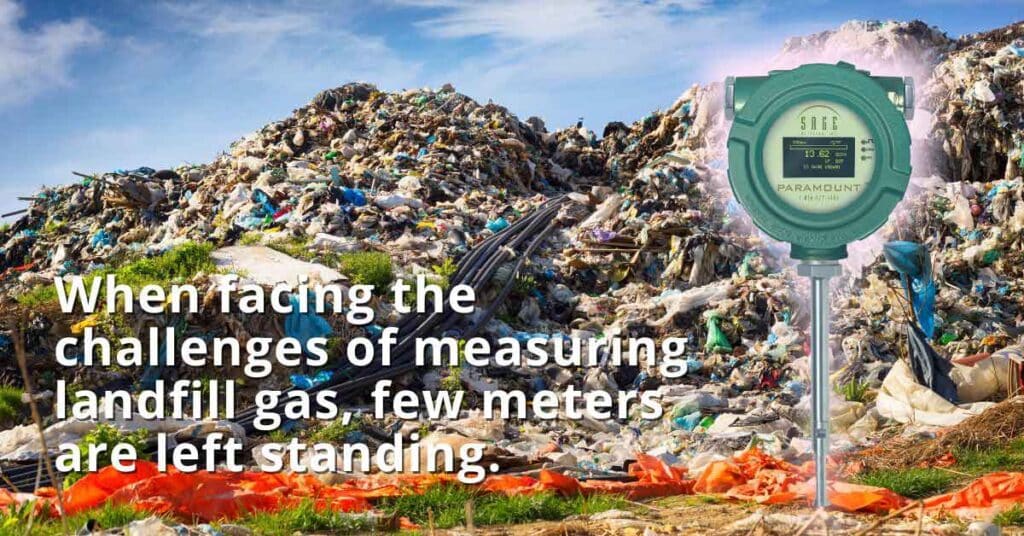Landfill gas (LFG) is a type of biogas derived from municipal solid waste and can be used to create renewable energy. We indirectly reduce greenhouse gas emissions by implementing landfill gas into energy. Thermal mass flow meters are beneficial in landfill gas monitoring to satisfy EPA reporting requirements and create alternatives to fossil fuels.
Facilities annually emitting 25,000 metric tons of CO2e are required by the EPA to report annual GHG emissions per EPA mandate 40 CFR Part 98. Subpart HH covers all aspects of municipal solid waste landfills. In contrast, Subpart TT covers industrial waste landfills. Flow meters can measure landfill gas and determine methane emissions in both subparts.
What is Landfill Gas?
Landfill Gas is generated from the breakdown of municipal solid waste. There are hundreds of municipal landfills, all of which produce a mixture of methane and carbon dioxide with traces of nitrogen, oxygen, and other gases. At active landfills, these gases are extracted from multiple wellheads and collected through a network of pipes to a primary header pipe.
Landfill Gas to Energy
Typically LFG is about half methane and half carbon dioxide and, when upgraded, can replace traditional fossil fuels to heat buildings, boilers, and kilns, run generators to make electricity, and even produce fuel to power vehicles. A typical municipal landfill can produce enough energy from landfill gas to power thousands of homes for many years.
Greenhouse Gas Emissions
In addition to generating power, landfills are frequently involved with carbon offset projects. There are over 1000 landfills worldwide where landfill gas is collected, which reduces greenhouse gas emissions and accrues emissions credits to meet the EPA reporting requirements or to comply with Kyoto Protocol.
Landfill Gas Monitoring
The Sage Prime or Paramount thermal mass flow meters help quantify the emissions saved by measuring the mass flow rate. The flow meters excel at very low flow rates, which is typical for this gas type. The Sage meters offer an effortless way to conduct periodic calibration field checks with the Sage In-situ Calibration Verification procedure. In addition, Sage provides flare gas flow meters and various other thermal mass flow meters involved in landfill gas monitoring and reporting.
Thermal Mass Flow Meters in LFG Measurement
One of the primary advantages of thermal mass flow meters (over volumetric meters) is that they measure mass flow. The SAGE products are state-of-the-art, as Sage was the first to market a digitally-driven sensor, a graphical display, and onsite calibration verification. The SAGE meter is the only TMFM that provides a convenient, in-situ, and in-line calibration check that assures the flow meter retains the original NIST traceable calibration and is accurate.
Thermal flow meters meet the challenges of the environment, which include varying gas compositions, wet (saturated) and dirty gas, a potentially explosive environment, and fluctuations in the gas flow, including extremely low flow.
If you’d like to learn more about using thermal mass flow meters to measure or monitor landfill gas, read our technical note.
To read the Sage Metering white paper “Greenhouse Gas Emissions Monitoring Using Thermal Mass Flow Meters,” visit Sage GHG Emissions White Paper.


